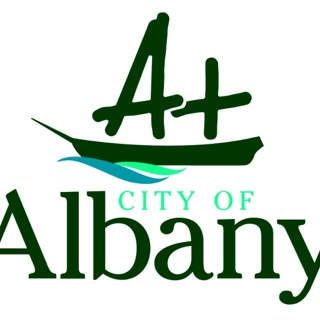Title Page
-
Site conducted
-
Conducted on
-
Prepared by
-
Location
Depot & Yard Inspection - Kinetic Sites
TRAFFIC MANAGEMENT
-
Adequate and safe parking for bus/coaches?
-
Is depot signage clear including speed limits, entry and exit points, traffic flow/directions, stop signs, parking spaces?
-
Line marking is clear – walkways / crossings / traffic flow?
-
Space allowed and clear for the swing of large vehicles/buses?
-
Is there a safety procedure adhered to when reversing buses in the depot yard (e.g., sounding horn 3 times prior to reversing, reversing indicators on buses, using a spotter)?
-
Is site signage clear and free from obstruction?
-
Traffic Management Plan and Parking plan adhered to?
Yard House Keeping
-
Is yard, clean and tidy?
-
Are waste disposal & recycling facilities available, maintained, and appropriate?
-
Is yard free from potholes and loose surfaces that may cause an incident?
-
Are people in the depot yard wearing appropriate PPE for the task they are performing? E.g., vests / day / night high visibility clothing, gloves, eye protection etc?
-
Is lighting working and sufficient for work being completed at dusk, dawn, and night?
-
Are any security measures functioning and adequate (security cameras, locks, electronic gates, sensor lights)?
Incidents and Emergencies
-
Are incident report forms readily available to workshop staff?
-
Is depot emergency plan displayed and readily available in key areas?
-
Emergency telephone numbers prominently displayed?
-
Is the list of emergency response personnel (first aid officers, fire wardens etc) displayed?
-
If there is an emergency right now, are there currently first aiders and fire wardens on site ready to respond?
-
First aid kit available in suitable areas and adequately stocked?
-
Fire extinguishers suitable, available, mounted, signed, and regularly inspected/tested (6 monthly)?
-
Are workshop emergency exits clear and exist signage adequate, illuminated and working when power is off?
-
Fire blankets available, readily accessible, and in good condition?
-
Suitable eyewash station/shower/equipment available and working?
-
Is an emergency alarm/horn sign posted and present?
-
Yard gate keys accessible in case of emergency?
-
Evacuation diagram present in accessible places, current and orientated the right way?
-
Are emergency drills carried out on time and in accordance with the Emergency Plan?
Manual Handling and Ergonomics
-
Frequently used items are stored in easy to access shelves between knee and shoulder height?
-
A step ladder is used where necessary and close / easily accessible?
-
Are the desks and chairs in a safe condition?
-
Can workstations and computers be adjusted to suit individual worker needs?
-
Is there sufficient legroom under the desk?
-
Are manual handling aids available to transport heavy items such as large boxes and containers?
-
Are workers using trollies for transporting tools and other products around while performing their work?
-
Appropriate lifting tools available and used for heavy items such as engines, tyres etc.?
General House Keeping
-
Racks and shelves display storage weight limits?
-
Do racks and shelves visually look structurally sound?
-
Are racks and shelves certified?
-
Racks and shelves free from items that might fall?
-
Are bollards around pressure vessel/s in good working order?
-
Are the airline hoses and fittings rated for the pressure required and are in good condition?
-
Is there any excessive noise? Are sources of excessive noise identified and managed?
-
Are floors clean, dry and free from slip / trip hazards & obstructions?
-
Stairs have adequate foot space, handrails and slip resistant strips?
-
Storage areas are tidy and floors are free from tripping hazards?
-
Storage areas are regularly reviewed so that objects that do not need to be retained are discarded?
-
Adequate lighting and ventilation?
-
Services functioning (taps, power points, lights etc.)?
-
Waste disposal procedures adopted and adhered to?
-
Are kitchen benches and appliances kept clean?
-
Are fridges cleaned out regularly?
-
Toilet facilities clean and tidy?
-
Are workshop entry and exit points clear and free from obstruction?
-
"No Smoking" signs prominently displayed?
-
Is machine guarding and emergency stops installed?
-
Are Emergency Stop Buttons working and labelled correctly?
Hazardous Chemicals
-
Gas cylinders upright and secured?
-
Separation distances for Gas cylinders in storage? (LPG and Acetylene stored at least 5m away from oxygen cylinder unless in use on trolly)
-
Are chemicals appropriately labelled (including decanted products)?
-
Are chemical containers kept closed when not in use?
-
Are hazardous chemicals and dangerous goods recorded in the chemicals register?
-
Are SDS’s available for all chemicals (no older than five years)?
-
Are SDS stored in a suitable, signed location and do workers know where to locate them?
-
Is oil stored in a bunded area or spill protected trolly?
-
Flammable liquids stored in flammables cabinet?
-
All batteries stored in designated bunded area?
-
Integrity of bunds visually verified?
-
Adequate spill kit(s) available and fully stocked?
-
Are chemical storage areas clean, tidy and only used for the storage of chemicals?
-
Are all chemicals safely stored? Consider spill prevention, segregation requirements, ignition points etc
-
Is signage & placarding clearly displayed where hazardous chemicals and dangerous goods are stored?
-
Are chemical containers washed out in areas to prevent them from entering storm water drains / waterways?
-
Are first aid resources and emergency equipment adequate for the types of chemicals located on site? Check against SDS’s. e.g. correct fire extinguishers
-
Do the first aiders and wardens on site know the correct management of all chemical related potential incidents on site?
-
No fumes detected?
Electrical Safety
-
Are electrical leads tested and tagged (according to AS/NZS3760)?
-
Is oxy fuel gas inspected and maintained as scheduled (no hose cracking and fitted with flashback arrester)?
-
Is electrical test equipment (e.g. multimeters) calibrated every 6 months?
-
Are pressure gauges fitted to inflation points and are they calibrated?
-
Are any welding machines inspected and tested for earthing between the earth pin and metal casing (part of test and tag inspections)?
-
Are power boards used industrial and no evidence of “piggybacking” or double adaptors in use?
-
Is the main power board inspected every 6 months?
-
Is an RCD type 2 fitted at the main power board?
-
Are electrical leads off the ground & no leads greater than 25m in length?
Heights, lifting equipment and Pits
-
Are ladders in use compliant (industrial rated), if engineered are certified and appropriately set up?
-
Are people who are working at heights trained (hold RIIWHS204D competency)
-
Is there a rescue plan in place in the event someone falls from heights?
-
Is the static line certified?
-
Are inertia reels inspected at least every 12 months?
-
Are harnesses and lanyards inspected every 6 months?
-
Are vehicle hoists inspected every 6 months by a competent person?
-
Are lifting support stands and hydraulic jacks inspected every 6 months?
-
Forklift inspected prior to use and records of each inspection maintained?
-
Are forklift operators licenced?
-
Is forklift serviced and maintained and are jibs and other forklift equipment appropriately engineered and certified?
-
Are pits without buses cordoned off?
Equipment Safety and Maintenance
-
Are prestart inspection forms available and in use?
-
Check a bus at random (one that is currently fit for use)
-
Is the interior and exterior clean and presentable? Signage consistent and to standard?
-
Check a bus that has been defected/undergoing maintenance. Does it contain a “do not operate” steering wheel cover?
-
Is equipment maintenance scheduled and regularly maintained?
-
Are all torque wrenches calibrated and are the calibration certificate/s current?
-
Is the calibration certificate current for all weigh scales?
-
Are pressure vessels certified and inspected as scheduled?
-
Are out of service tags and lock out devices available?













